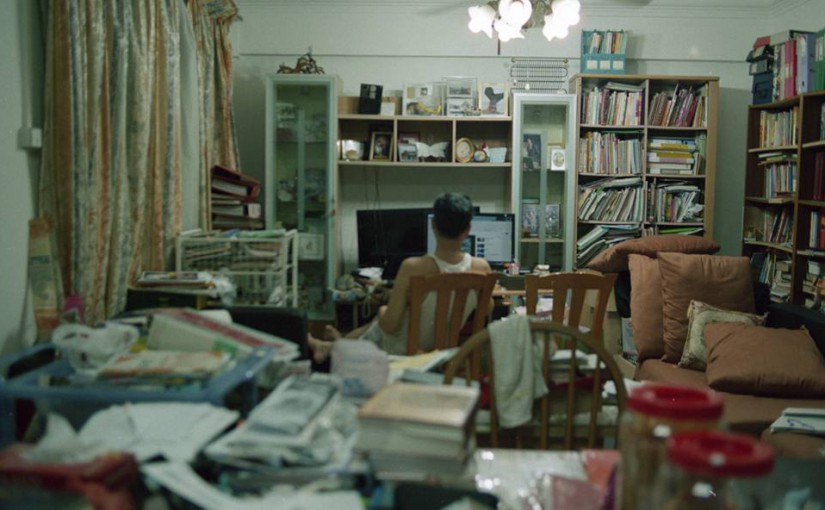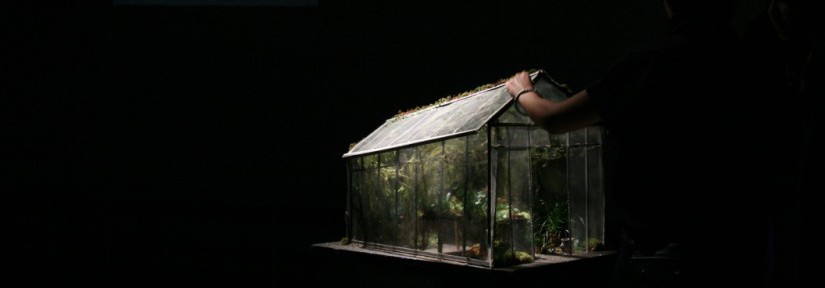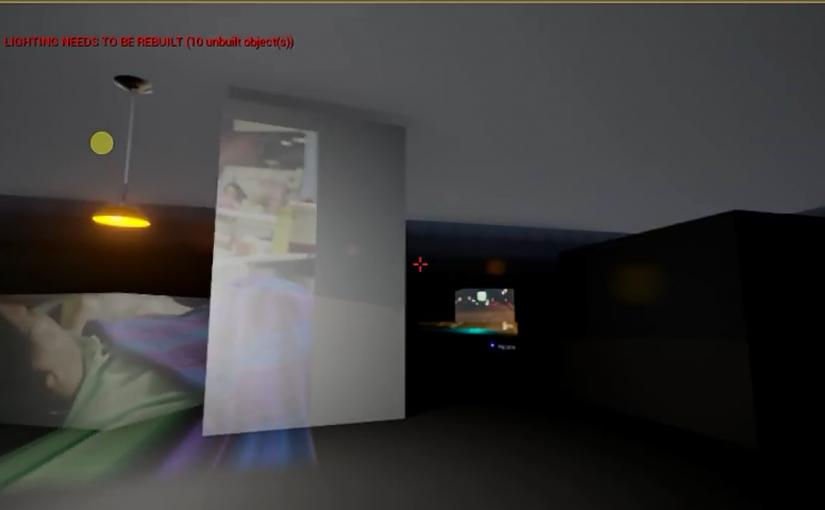http://www.issac.sg/Hui/index.html
Here’s the final if anyone is interested.
insert coin to proceed
http://www.issac.sg/Hui/index.html
Here’s the final if anyone is interested.
Guy Debord’s – The Naked City (1957)
Guy Debord’s Naked City, present the most radical departure from the grid. In reaction to the rational city models embraced by Parisian postwar planners in the 1950s, he and his colleagues co-opted the map of Paris, reconfiguring the experience of the city through its authority. By manipulating the map itself, they intervened in the logic of the city, constructing an alternative geography that favored the marginalized, and often threatened, spaces of the urban grid. Torn from their geographical context, these areas were woven together by arrows inspired by the itineraries of the drift or “dérive.” These “psychogeographic” maps proposed a fragmented, subjective, and temporal experience of the city as opposed to the seemingly omnipotent perspective of the planimetric map. As mapping is used as a tactic to bring together personal narratives about urban space, the Situationist maps provide a useful example of visualizing a subjective view of the city.
The central problem with these maps is not in the way in which they confront norms of cartography, but the duration to which they are bound. The ephemeral nature of psychogeographic space meant that these sites could quickly shift through the pressures of development. The Situationist maps in turn become an archive of a specific moment in the life of the city. However, if these maps incorporated time, they would be able to show the migration or disappearance of these psychogeographic spaces, highlighting and critiquing the urban trends that were / are shaping the city.
This entry was posted in Articles, Literature. Bookmark the permalink.
I was introduced to The Naked City about a year ago by Luis, my 4d professor.
He introduced to us this concept of dérive which is “
an unplanned journey through a landscape, usually urban, on which the subtle aesthetic contours of the surrounding architecture and geography subconsciously direct the travellers, with the ultimate goal of encountering an entirely new and authentic experience. Situationist theorist Guy Debord defines the dérive as “a mode of experimental behavior linked to the conditions of urban society: a technique of rapid passage through varied ambiances.”
” Can maps be a form of narrative? What does maps actually tell us?
In the book, the Dreamcatcher, one of the character described having a memory warehouse in his mind, able to retrieve and store any memory, this is also known as the method of loci (loci being Latin for “places”[1]), memory palace, mind palace. This method depends more on spatial memory than simply intelligence.
Having collected some images for my project, I’ve come to realize one of the greater challenges one must face when handling interactive narrative is not what story you wish to tell, but how to tell it.
If we understand our stories as routes, can we create a means of navigating through narratives? How would that change the way we experience stories than simply just buttons. What if we could actually see how the paths interlink and criss-cross. Would that change the way we navigate through stories?
The next step for this project is not so much to simple just take more images, but also to understand how these images can be shown.
Can we map it out several stories so that we can better see relationships?
What about choices we make in the experience? Does it even affect anything? And should it affect?
My goal now is to put the stories together and allow one to navigate it like a maze.

At this moment, I’m thinking of creating a mixed media installation.
The installation contains two ways narrative is consumed, passively and actively.
The passive narrative happens at the side of the walls, with projectors showing photos.
These are images that I’ve collected over the weeks before the death of my aunt.
These are images I tried to capture.
At the center of this installation is a game.
The game is a simple simulation of choice.
What would you do if you have 6 days left to spend with someone you love?
Here’s a prototype I made in Unreal. You make choices in this game, maybe simple straight forward choice or morally difficult choices. Maybe you need to choose to ignore work for family, maybe you need to choose between members of the family.
In a given scenario maybe you find yourself having to choose between a sick daughter and a dying mother.
While I guess this game would have some interest, it would be difficult to create a work like this without it feeling overly manipulative. Getting the player to be emotionally involved also makes it challenging.
Perhaps another time…

Splendid Isolation (2010) by Lea Vidakovic
This lesson we have a sharing from Lea Vidakovic
http://www.leavidakovic.com
Several terms for setting the context Fragmented narrative – non-linear, disjointed
Animation installation
Spatial Story telling
Magic lantern
Phantasmagoria – Robertson (1797)
Pre-cinematic narrative vs post-cinematic
Narratives in animation where stories are shorter.
Spatial connection with interaction
Rose Bond
Site-specific narrative using projection
TABAIMO
Born in Hyogo in 1975, Tabaimo is a phenomenon in Japan. A major retrospective of her works was presented at Tokyo’s Hara Museum in 2006.
Her video installations, which incorporate animated films, draw their inspiration from the current social and economic problems, revealing the underbelly of Japanese society.Her animations combine the nuanced colours of traditional engravings with the sophisticated technology of the computer.
What is it about her pessimistic and phantasmagoric world that captures the interest of so many people?
What will she do next ?
In addition to Ginyo-ru, her most important work since hanabi-ra in 2003, this film surveys her retrospectives at the Hara Museum, the Fondation Cartier, where Tabaimo presented her first solo exhibition in Europe in 2007, as well as the Venice Biennale, reflecting her output over the last eight years.
TABAIMO talks about creating works where the narrative is not strictly defined. I love her use of space to convey a kind of emotion. Her works focus on using the space to tell the story of what
How do we understand the world?
How do we make sense of the world?
We take in a fragment, a headline, a part of a dream.
Does a narrative have to make sense?
How much control should we give the audience who on
Ringo Bunoan, Endings and No Endings
In this installation, Ringo used books as well as their endings to form a philosophical statement about time. The tower of books against the wall have had their endings removed; conjoined in endless continuity. On the other side, the removed single-paged endings with ‘The End’ marking its finality line the adjacent wall; an ironic chain of endings.
Ringo Bunoan, Endings, 2013. Framed book pages. Dimensions variable. Singapore Art Museum collection
Ringo Bunoan, No Endings, 2013. Book installation. Dimensions variable.
“As much as it is about endings, it is about endlessness. So, ideally the works should be floor to floor and wall to wall; this idea of continuity in connecting spaces. You can have a thousand endings and always add to it—there is no end.” – Ringo Bunoan
As one’s eyes follow the vertical tower and the horizontal display of framed book pages, a cross-hair or intersection of sorts is demarcated; an imagined completion of the books and of time through the movement of our eyes.
Liana Yang – With Someone Like You
A recent installation that I had the honor to seeing is this work of Liana Yang. In a room filled with pages of romantic novels, the stories are spread out on to walls, each with a page describing an encounter of two. There really isn’t much of a story but we can a sense of this romance in the lines.
The intrigue for me was how we began creating our own narrative out of the lines. We form our own love story. We imagine what is happening and we began to leave with different ideas of what the story is.
The piece intriguing because there is no handholding. It does not tell us what the story is, or if there is even any story at all.
We don’t know where to start, or rather we can start anywhere,and I think that is pretty cool.
Physical space as a narrative device
gaps between the screens
editing techniques
spatial montage
metaphors
sound interaction
Each viewing will offer another layer of meaning and closure

This week I attempted to create a system for my work.
By system I define it as a means of interaction which unifies the different medium used in the game.
One way which I attempted to do so is through a simulation, in which I ‘project’ the images onto a surface as though the are real projections.
The images are created using decal materials, so you can only see it when it is cast onto a surface.
In the demo above, you can make an image visible by shifting cubes and allowing it to be casted on.
I also found a game that uses a similar concept,in which shares similar styles and means of portraying what I wish to portray.
I believe that this is a promising means of creating aesthetics that would blend well with the narrative. I am also thinking of embedding narrative in the narrative, to have an overarching story and several under lying ones.
I think that would be an interesting idea.
One of the greatest challenge I face with my project it trying to put all the separate pieces together.
The means of creating the work is an important process, but what am I delivering in the final product is what makes me feel the most worried about.
The project has undoubtedly taken a detour.
Today, 8:11 am, my aunt drew her last breath.
As such, I am lost.
Not only on what to do with my project, but also how do I move on from here.
How do we move on from here.
Where do we go now?
I think…I’m not ready for the answers…
Where do we go now?

“In a riddle whose answer is chess, what is the only prohibited word?”
I thought a moment and replied, “The word chess.”
The way the reading sets it apart from any other reading that I have had the pleasure of encountering.
The way the reading starts off sets it apart from any other reading that I have had the pleasure of encountering.
“On page 22 of Liddell Hart’s History of World War I you will read that an attack against the Serre-Montauban line by thirteen British divisions (supported by 1,400 artillery pieces), planned for the 24th of July, 1916, had to be postponed until the morning of the 29th. The torrential rains, Captain Liddell Hart comments, caused this delay, an insignificant one, to be sure. “
“
Immediately, it hooks you into this work of non-linearity, a reading unlike anything I have ever encountered. One that recognize itself as a reading and uses this mechanics of breaking the fourth wall as part of it’s narrative.
The word ‘Time’ , as Albert puts it, is prohibited because it is exactly what the reading is about.
I found this idea so intriguing, this idea that we can convey the theme by omission, it sparked an idea for my own project. ( But more on that later.) This form of story-telling ran parallel to the “Adventure books” that I played when i was a child.
“Turn to page 32, you encounter a troll.”
“Turn to page 18 if you believe in free will.”
“Turn to page 18 if you believe in free will.”
Yet it managed to capture something so poetic that these “Adventure books” never manage to, the idea of time as a mechanics .
The plot itself was very compelling too. In a earlier part of the story after Doctor Albert had revealed his understanding of the book as the labyrinth, it was hinted that Doctor Tsun will arrive at his house, once as an enemy and once as a friend.
“The rest is unreal, insignificant. Madden broke in, arrested me. I have been condemned to the gallows. I have won out abominably; I have communicated to Berlin the secret name of the city they must attack. They bombed it yesterday; I read it in the same papers that offered to England the mystery of the learned Sinologist Stephen Albert who was murdered by a stranger, one Yu Tsun. The Chief had deciphered this mystery. He knew my problem was to indicate (through the uproar of the war) the city called Albert, and that I had found no other means to do so than to kill a man of that name. He does not know (no one can know) my innumerable contrition and weariness.”
.
As a spark of an idea, i wonder if it’s possible to craft a mix medium narrative using game, writing and even photos? Would that be an appealing narrative?
Recent Comments